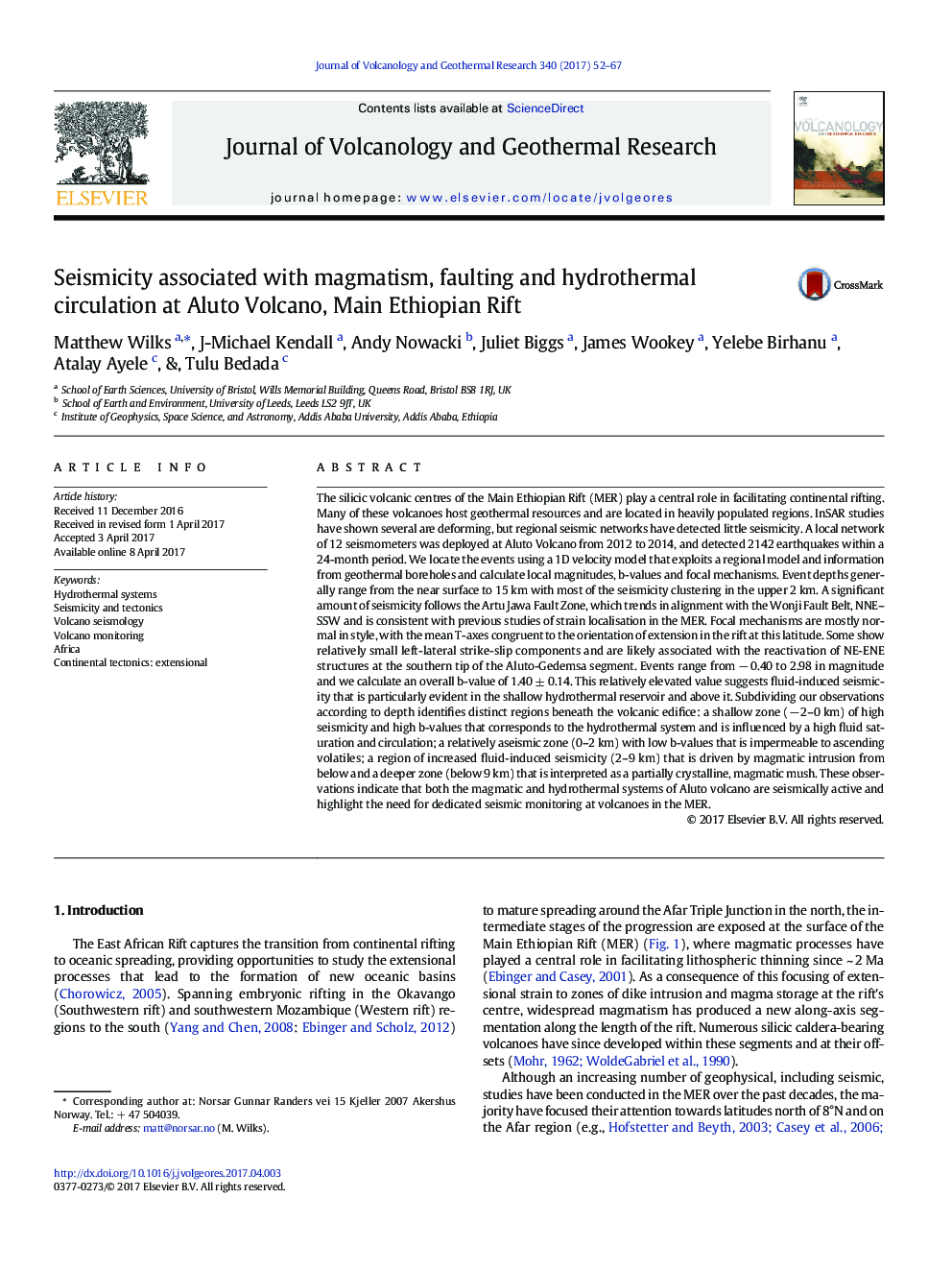| کد مقاله | کد نشریه | سال انتشار | مقاله انگلیسی | نسخه تمام متن |
|---|---|---|---|---|
| 5783671 | 1638283 | 2017 | 16 صفحه PDF | دانلود رایگان |
- The first volcano-specific seismic monitoring experiment at Aluto volcano, MER
- Profuse seismicity within the shallow hydrothermal system and above it.
- A partially crystalline mush zone as Aluto's primary magmatic reservoir.
- Intrusion episodes and fast resealing of an impermeable cap influence deformation.
- Focal mechanisms show normal slip in the orientation of overall rift extension.
The silicic volcanic centres of the Main Ethiopian Rift (MER) play a central role in facilitating continental rifting. Many of these volcanoes host geothermal resources and are located in heavily populated regions. InSAR studies have shown several are deforming, but regional seismic networks have detected little seismicity. A local network of 12 seismometers was deployed at Aluto Volcano from 2012 to 2014, and detected 2142 earthquakes within a 24-month period. We locate the events using a 1D velocity model that exploits a regional model and information from geothermal boreholes and calculate local magnitudes, b-values and focal mechanisms. Event depths generally range from the near surface to 15 km with most of the seismicity clustering in the upper 2 km. A significant amount of seismicity follows the Artu Jawa Fault Zone, which trends in alignment with the Wonji Fault Belt, NNE-SSW and is consistent with previous studies of strain localisation in the MER. Focal mechanisms are mostly normal in style, with the mean T-axes congruent to the orientation of extension in the rift at this latitude. Some show relatively small left-lateral strike-slip components and are likely associated with the reactivation of NE-ENE structures at the southern tip of the Aluto-Gedemsa segment. Events range from â 0.40 to 2.98 in magnitude and we calculate an overall b-value of 1.40 ± 0.14. This relatively elevated value suggests fluid-induced seismicity that is particularly evident in the shallow hydrothermal reservoir and above it. Subdividing our observations according to depth identifies distinct regions beneath the volcanic edifice: a shallow zone (â 2-0 km) of high seismicity and high b-values that corresponds to the hydrothermal system and is influenced by a high fluid saturation and circulation; a relatively aseismic zone (0-2 km) with low b-values that is impermeable to ascending volatiles; a region of increased fluid-induced seismicity (2-9 km) that is driven by magmatic intrusion from below and a deeper zone (below 9 km) that is interpreted as a partially crystalline, magmatic mush. These observations indicate that both the magmatic and hydrothermal systems of Aluto volcano are seismically active and highlight the need for dedicated seismic monitoring at volcanoes in the MER.
Journal: Journal of Volcanology and Geothermal Research - Volume 340, 15 June 2017, Pages 52-67
